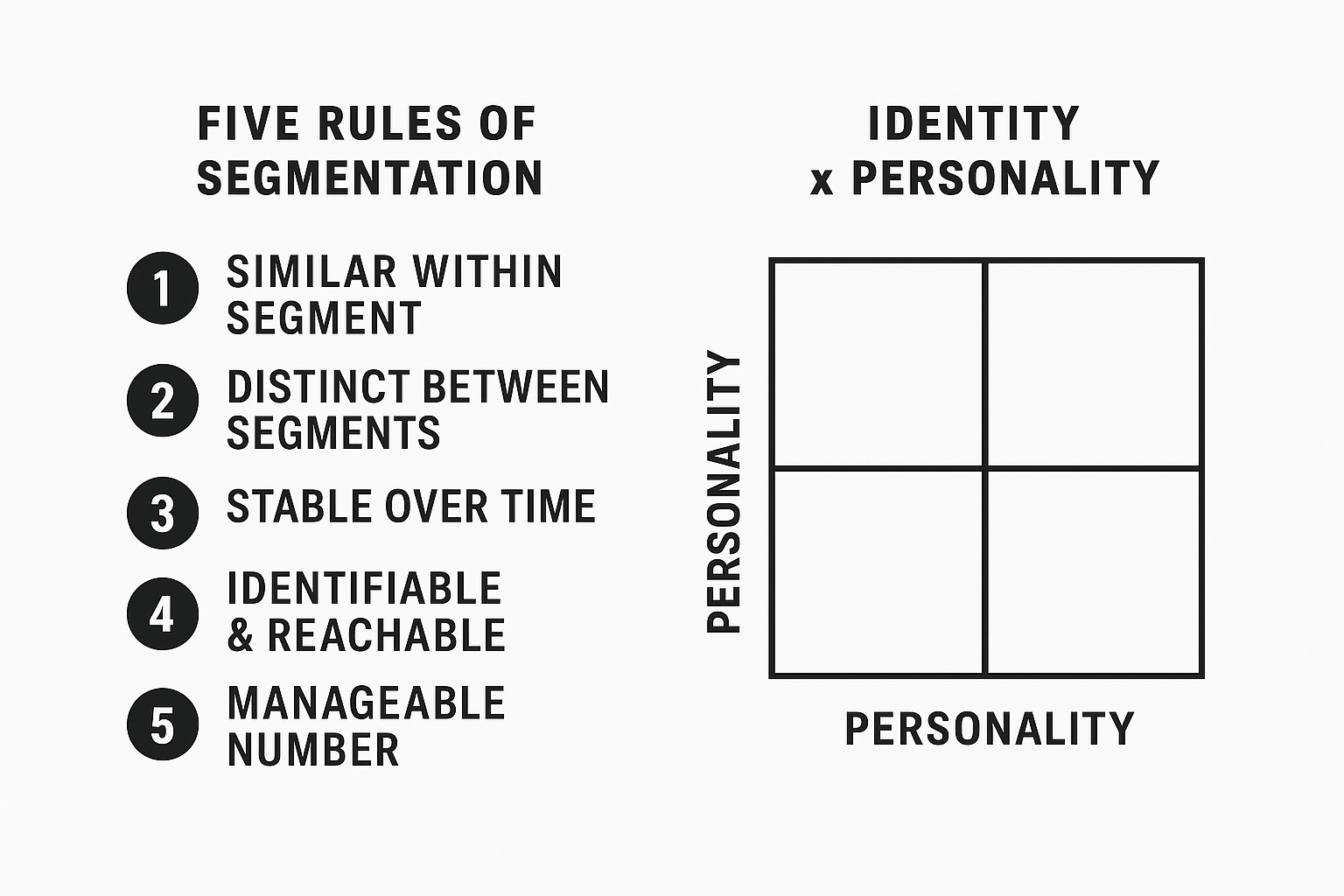Segmentation: The Five Rules and One Big Red Flag
The only reason to segment your donors is because you think treating them differently will make you more money.
But for that to work, your segmentation has to follow five must-have rules:
- People in the same segment are similar in ways that matter to giving.
- People in different segments are meaningfully different, again, in ways that matter to giving.
- The segments are stable over time.
- They’re identifiable and reachable in the real world.
- You don’t have so many that you need a second CRM and a Xanax.
Let’s focus on the first two because they beg the question: what data are you using to define these segments?
Segmentation ≠ Selection
Most nonprofits use behavioral and demographic data. Like pulling a list of donors who gave last year or flagging people over 65 for a planned giving brochure. That’s not segmentation, it’s filtering.
Behavior tells you what they did. Demographics tell you who they are. But neither tells you why they gave. That’s the job of psychological data, like Identity and Personality.
Which brings us to the red flag…
The Cluster Fiasco
Beware the black box solution, the shiny PowerPoint deck full of “Personas” from cluster analysis. It sounds data-driven, looks impressive and has names like “Eco Eva” and “Passive Phil.”
But 99% of cluster analyses are garbage, throwing dozens of variables into statistical software, pressing the magic “cluster” button and calling it segmentation. It violates at least three, often all five, of the rules.
If your segmentation lives entirely in PowerPoint and never makes it into your CRM or copy briefs, it’s not real. It’s theater, expensive theater.
The Right Foundation: Identity and Personality
Real segmentation starts with psychological theory that’s been both peer-reviewed and field-tested.

- Identity is how people see themselves. “I’m a Conservationist” is a far more predictive signal of giving than “I’m 64 and female.”
- Personality is how they’re wired. The Big Five traits (Openness, Conscientiousness, Extraversion, Agreeableness, and Neuroticism) shape what people pay attention to and what resonates.
You can use Personality to segment within an Identity. Not all Conservationists are the same. One might crave data-rich habitat stories (Openness). Another wants to rescue hurt animals (Agreeableness).
And yes, you can tag individuals with these traits using 3rd party data. That’s not fantasy, it’s now.
The Playbook
This approach isn’t about creating 27 segments. It’s about going from one-size-fits-all to two controls. Two messages. Two creative briefs. One for Openness-Conservationists. One for Agreeableness-Conservationists. Then you test. Then you grow.
You probably don’t have one audience. But going from one to two? That’s already more than most of your peers are doing. Those slick Persona decks? They’re the siren song. They feel easy but they’re disconnected from execution and fail the segmentation sniff test.
Real segmentation is strategic, grounded in theory and it shows up in your messaging, list pulls, and creative.
Kevin



This is so, so smart — as always. I’m curious… people can do the personality segmentation using DonorVoice software, yes? Is there any other way to do this, of which you’re aware? Thanks!
Hi Claire, thanks for the comment and question. To clarify, no software required and no long, medium or short term engagement with DonorVoice required. It’s a data product, $0.15 per name to have Big Five traits appended to any donor records whether the file is 100 names or 1 million. Client owns tags, unlimited use and no need to re-tag same names as trait profiles don’t change. The per name cost includes cheat sheets, one per trait on how to tailor and a 45min workshop with the behavioral science team to get training, ask questions, see examples and rationale, etc.
There is nobody else doing anything like this that I’m aware of. Frankly, I don’t understand any charity that doesn’t find this offer compelling. It’s an inexpensive way to know something substantive and personal about each donor and a proven way to make that work in mass market. But clearly there are barriers to trial and my bias is not seeing or appreciating those enough.
Do let me know what you think. Thanks,
Kevin